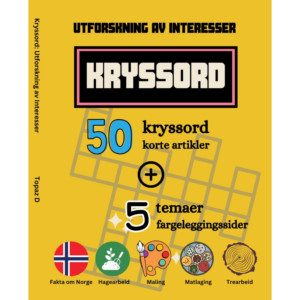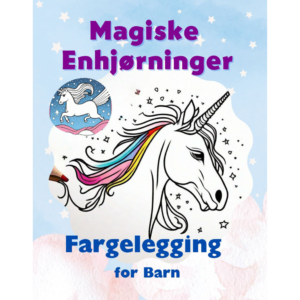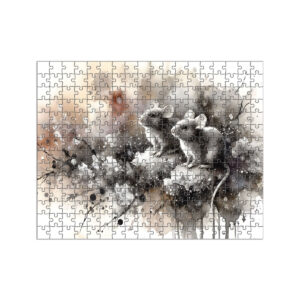
Explore & Play
Discover interesting topics and solve the accompanying crossword puzzle.
Lament Crossword | Norwegian songs portray sorrow, hope, and transformation
Table of Contents
Lament Crossword
You can either fill in the crossword puzzle directly on this page or click the button in the bottom right corner to print it for free.

From Darkness to Light: How Norwegian Songs Capture Emotional Journeys
Norwegian folk music is known for its deep emotional resonance, with themes that traverse sorrow, loss, and ultimately, hope. These emotional journeys, captured in songs, reflect not only personal experiences but also a connection to the cultural identity of Norway. In this article, we explore how these songs take listeners from the depths of darkness to the embrace of light, using emotional depth and the beauty of nature as metaphors. The words found in our crossword puzzle will guide us through these themes, revealing the layers of emotional complexity in Norwegian lament songs.
I. The Power of Darkness in Norwegian Songs
In many Norwegian songs, darkness is not merely an absence of light. Instead, it represents emotional struggles—pain, longing, and sometimes despair. These songs paint a vivid picture of human vulnerability, tapping into the deepest layers of the heart. As we delve into the power of darkness, we uncover how these emotions are woven into the fabric of Norwegian folk music.
A. The Deep Sorrow of Lost Love
One of the most poignant expressions of sorrow in Norwegian music comes from songs about lost love. Kjærlighetens ende and Savn are two perfect examples of this. These songs delve into the heartache of love lost and the profound emotional void that follows. In Kjærlighetens ende (The End of Love), the lyrics recount the slow fading of affection, while Savn (Longing) speaks of the yearning that remains even after the relationship is over.
Both songs beautifully illustrate how love’s departure leaves an indelible mark on the heart. The sorrow is deep, and in these moments, time seems to stand still. This heartache is the starting point of many Norwegian songs, where the darkness of loss eventually gives way to the possibility of healing.
B. The Cold Embrace of Winter and Isolation
The coldness of winter plays a significant role in conveying feelings of isolation and emotional desolation in Norwegian music. Songs like Vinteren er her (Winter is Here) and Ensomhetens mørke (The Darkness of Loneliness) use the harshness of the Norwegian winter to mirror the internal coldness that often accompanies emotional pain. In these songs, winter is more than just a season; it is a symbol of emotional isolation, the feeling of being cut off from the warmth of human connection.
In Vinteren er her, the frozen landscapes echo the coldness inside, while Ensomhetens mørke explores the solitude that one feels in the absence of companionship. The cold winds of winter seem to emphasize the silence of a heart that has not yet healed, reinforcing the theme of emotional isolation.
C. The Heavy Burden of Loneliness
Loneliness is another recurring theme in Norwegian lament songs. In Ensomhetens mørke and Tårene strømmer (Tears Flowing), the feeling of isolation is portrayed as an ever-present companion. These songs speak to the raw, painful reality of being alone, and they resonate with anyone who has ever felt emotionally abandoned.
Ensomhetens mørke paints a stark picture of being enveloped by darkness, unable to escape the weight of one’s solitude. Similarly, Tårene strømmer conveys the sorrow of tears flowing in the absence of comfort, reinforcing the emotional toll that loneliness takes on the soul. In both songs, the heartache of being alone is inescapable, but it also sets the stage for a potential shift in perspective as the songs move toward hope.
II. Transitioning from Darkness: The First Glimmers of Hope
While the early part of Norwegian songs often explores deep sorrow, there is usually a shift that begins to take place. This transition from darkness to light is subtle but significant, and it provides listeners with the promise of hope, renewal, and growth. It is in these moments that the healing process begins.
A. The Arrival of Morning and a New Day
As the night gives way to morning, the first glimmers of hope begin to emerge. Songs like Morgengry (Dawn) and Første snø (First Snow) symbolize this transition. In Morgengry, the rising sun represents the first step out of the darkness, bringing with it the possibility of a fresh start. Similarly, Første snø uses the arrival of the first snow to signify new beginnings, purity, and hope. The white, untouched snowflakes bring with them a sense of calm, providing a stark contrast to the emotional storm that preceded them.
These songs evoke a sense of renewal, reminding listeners that no matter how long the night, morning will eventually come. The emotional turmoil that once seemed endless begins to dissipate as the light of a new day emerges.
B. Farewell and Acceptance of Change
Saying goodbye is often a necessary step toward emotional healing. In Farvel (Goodbye) and Siste reis (The Last Journey), the act of farewell is depicted not as an end but as a means of moving forward. Farvel explores the emotional complexity of letting go, while Siste reis speaks to the acceptance of inevitable change.
In both songs, farewell is not a finality but a transition—an emotional pivot that allows the individual to begin healing. While the sorrow of saying goodbye is palpable, there is also an undercurrent of acceptance. Through these songs, we are reminded that sometimes, it is only by letting go that we can make room for new experiences and growth.
III. Embracing the Light: Resolution and Renewal
As the emotional journey continues, we finally reach the stage of healing and renewal. Norwegian folk songs celebrate this transition with a sense of calm resolution, where the light that once seemed distant now fully embraces the listener. These songs are not just about overcoming darkness; they are about finding peace in the aftermath and embracing the beauty of life once again.
A. The Healing Power of Time
Time is a powerful healer, and this theme is central to songs like Blåfjell (Blue Mountain) and Lys og mørke (Light and Darkness). As time passes, the wounds of the past begin to fade, replaced by a quiet sense of healing. In Blåfjell, the mountains, with their ancient stillness, become a metaphor for the passage of time—constant, unchanging, and full of wisdom. In Lys og mørke, light and darkness coexist, symbolizing the balance that comes with acceptance and understanding.
These songs suggest that while darkness may linger, it is not forever. With time, emotional scars begin to fade, and the healing process begins to take root. The songs remind us that even after the longest winter, the light of a new day is always within reach.
B. A Soul Reborn Through Nature and Love
In songs like Sommernatt (Summer Night) and Vandreren (The Wanderer), the theme of renewal is explored through nature and love. Sommernatt celebrates the warmth of summer, a time of rejuvenation and peace. The calmness of a summer night reflects the emotional stillness that comes with healing. Similarly, Vandreren tells the story of a wanderer on a journey toward self-discovery and renewal, driven by the hope that love and connection will eventually heal the wounds of the past.
Both songs convey that renewal is not only possible but inevitable. Just as nature regenerates with each season, so too can the human heart heal, even after the most profound loss.
IV. The Role of Nature in Shaping Emotional Landscapes
Norwegian songs often draw upon nature to express the inner emotional world. The vast landscapes of Norway—its mountains, forests, and lakes—are not mere backdrops but active participants in the emotional journeys depicted in these songs.
A. The Role of the Forest and Mountains in Emotional Reflection
The forest and mountains in songs like Skogen roper (The Forest Calls) and Blåfjell are not just physical landscapes; they represent emotional landscapes. The forest, with its dense and dark woods, is a place of introspection, while the mountains are symbols of endurance and strength. In Skogen roper, the forest’s call represents the longing for answers and the search for peace amidst chaos. Similarly, Blåfjell uses the vast, timeless mountains to evoke a sense of stability and solace, helping to guide the soul through turbulent emotions.
B. The Influence of the Wind and Weather on Emotional Expression
Weather patterns like wind and rain play a significant role in Norwegian music. In songs like Vinden hvisker (The Wind Whispers) and Solen går ned (The Sun Goes Down), the weather becomes a metaphor for the emotional shifts in the narrative. The wind whispers secrets and memories, while the setting sun represents the end of one emotional chapter and the beginning of another. These natural elements serve to underscore the emotional depth of the songs, making nature an integral part of the healing process.
V. The Emotional Spectrum: From Heartbreak to Healing
Norwegian songs often reflect the full emotional spectrum. From the heartbreak of Hjerteknus (Heartbroken) to the healing of Hjemløs (Homeless), these songs take listeners on a journey that covers the depths of despair and the heights of emotional renewal.
A. The Intensity of Heartbreak and Desperation
In songs like Hjerteknus and Uendelig tristhet (Endless Sadness), the intensity of emotional pain is on full display. These songs are raw, exposing the vulnerability of the human heart. The lyrics delve deep into the feeling of being torn apart by loss, and the sense of hopelessness that accompanies it. They remind us of the deep, sometimes unbearable weight of heartache.
B. The Quiet Hope and Light of Recovery
As the journey progresses, songs like Evig natt (Endless Night) and Hjemløs reflect the quiet yet steady movement toward recovery. Even after enduring profound pain, these songs offer a sense of peace. The night may feel endless, but within it, there is a flicker of hope—a reminder that healing is possible, even in the darkest times.
VI. The Universal Themes of Grief and Renewal
Though deeply rooted in Norwegian culture, the themes of grief and renewal present in these songs resonate universally. The emotional journey that begins in sorrow and moves toward hope is something that transcends borders and speaks to the shared human experience.
A. Cultural Context and Personal Connection
Norwegian folk songs offer a window into the cultural experience of loss, healing, and renewal. However, the emotions they evoke are universal. Whether in Norway or elsewhere, listeners can relate to the themes of grief, longing, and hope found in these songs. They create a bond between the past and present, as well as between cultures.
B. Emotional Resilience Across Borders
The resilience shown in these songs is something that speaks to people all over the world. Whether through the quiet strength of Vandreren or the hopeful message in Lys og mørke, these songs remind us that we all have the capacity to heal, no matter the depth of our sorrow.
A Final Note: From Darkness to Light—A Journey of Hope
The journey from darkness to light is more than just a musical experience; it is an emotional odyssey that resonates with anyone who has experienced heartache, longing, or loss. Through these songs, we are reminded that even in our darkest moments, hope is never far behind.
Play the Crossword!
If this emotional journey through Norwegian music has sparked something within you, why not try your hand at the crossword puzzle? Test your knowledge of these evocative songs and deepen your connection to Norway’s rich musical heritage.
Share to...
I hope you enjoy the content.
Want to receive our daily crossword puzzle or article? Subscribe!
You may also be interested in
Share to…
Want to receive our daily crossword puzzle?
-
Jigsaw Puzzles
Twelve Zodiac Mice Ink Wash Jigsaw Puzzle 250 | 300 | 500 Pieces
kr 348,00 – kr 439,00Price range: kr 348,00 through kr 439,00 Select options This product has multiple variants. The options may be chosen on the product page -
Jigsaw Puzzles
Zodiac Watercolor Rooster Puzzle: Artful Elegance 250 | 300 | 500 Pieces
kr 348,00 – kr 439,00Price range: kr 348,00 through kr 439,00 Select options This product has multiple variants. The options may be chosen on the product page -
Jigsaw Puzzles
Whimsical Garden Cat Jigsaw Puzzle 250 | 300 | 500 Pieces
kr 348,00 – kr 439,00Price range: kr 348,00 through kr 439,00 Select options This product has multiple variants. The options may be chosen on the product page

















